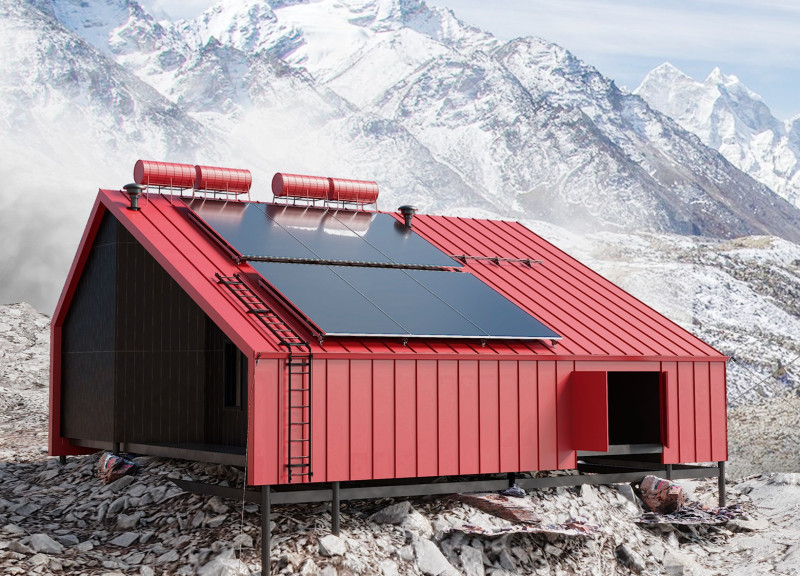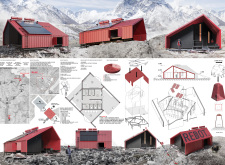5 key facts about this project
The design for toilet facilities at Everest Base Camp aims to tackle growing sanitation issues due to the increasing number of trekkers in the area. With about 500 individuals making the journey daily during peak season, the need for effective sanitation becomes critical. This initiative seeks not only to improve hygiene but also to reduce the environmental problems caused by human waste. The design concept focuses on practicality and sustainability, integrating the facilities into the unique environment of the Himalayas.
Site Selection
The facilities are strategically located at the last settlement before Base Camp, which is roughly a two-hour walk away. This position ensures easy access for both trekkers and local residents while addressing the logistical difficulties of a high-altitude setting. The site features stable soil conditions, which support dependable construction practices and contribute to the durability of the structures in the harsh climate.
Architectural Approach
A modular and lightweight design approach simplifies construction and transportation processes. By prioritizing portability, the project minimizes the physical effort needed for assembly and reduces the ecological impact associated with transporting materials. Each facility is designed to withstand seismic activity, showcasing a commitment to safety and long-term reliability in an area that is prone to natural events.
Sustainable Practices
Sustainability is a key focus in this design. Notable features include water collection systems that enable the reuse of resources, thus reducing reliance on local water supplies. The use of biodegradable toilet paper and efficient waste management practices reinforces the commitment to minimizing environmental harm. Additionally, solar panels provide renewable energy, allowing the facilities to function efficiently while supporting ecological standards.
Community Integration
Engaging the local community is another important aspect of the project, as it creates job opportunities for residents. By involving local workers in the construction and upkeep of the facilities, the initiative addresses not only the sanitary needs of visitors but also contributes to the economic welfare of the community. This connection fosters a sense of ownership, encouraging local stewardship of the facilities.
The design features distinct shapes and colors for the structures, enhancing visibility in a remote location. This approach helps users feel a sense of safety and comfort. Attention to such details connects the facilities with the surrounding landscape, allowing them to coexist within the natural beauty of the Himalayan environment.


















































